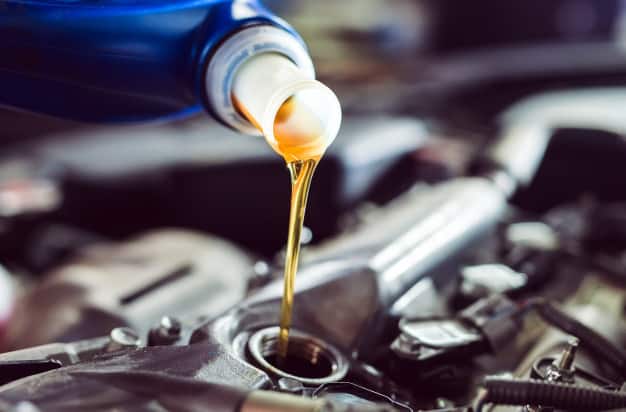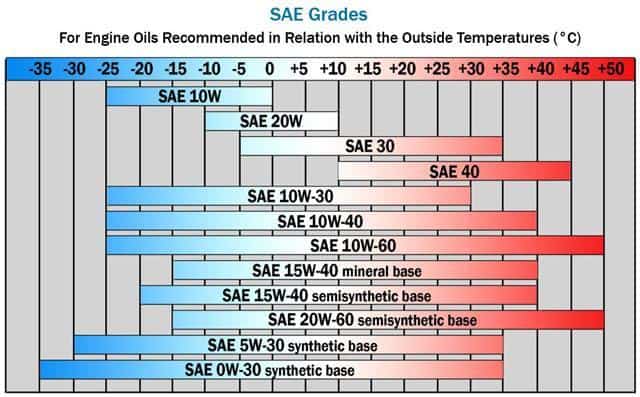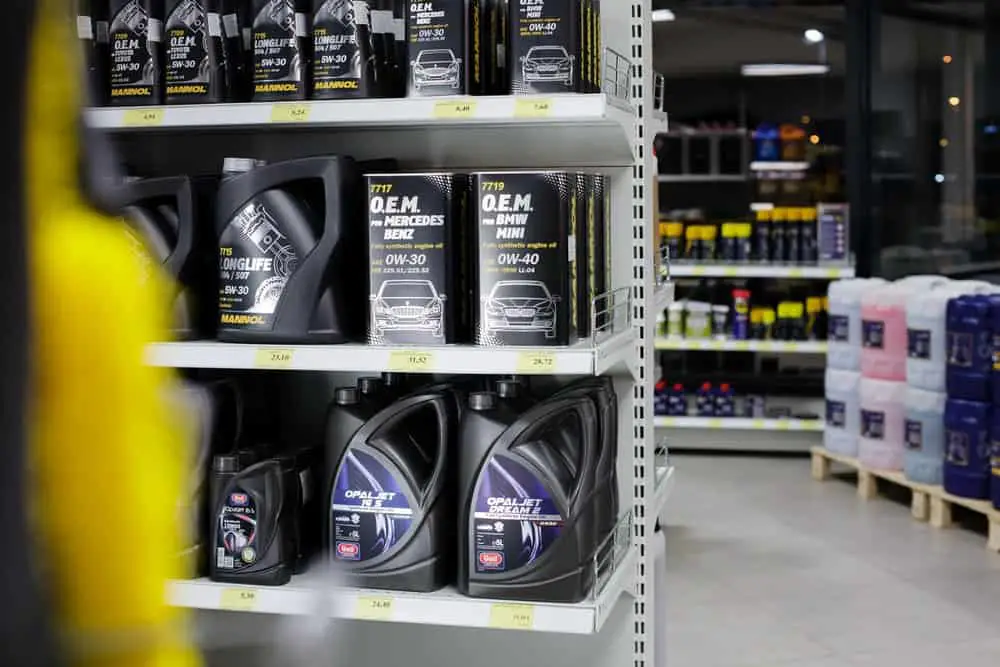So, you think you know oil? Just pay attention to that annoying sticker on the window, or make an appointment with your chosen oil change station once the maintenance light comes on, pay up and be on your way.
Sure, it may seem as easy as that but how much do you really know about one of the most important and meticulously engineered parts of your Jeep Wrangler?

We’re going to cover everything you need to know about Jeep Wrangler oil types and provide a complete breakdown of this critical engine component and cover what type of oil for jeep wrangler is used in all engines available throughout several generations of the Jeep Wrangler.
Let’s get into it!
Wrangler Engine Oil Terminology and Common Concepts
Before we get into Jeep Wrangler oil types, let’s get back to the basics and discuss this often misunderstood product. At its core, engine oil is designed to lubricate the internal metal parts of your Jeep Wrangler engine to minimize friction and dissipate heat.
Why are we concerned about friction? Friction causes heat and over time, this heat will have a critical effect on the longevity of your Wrangler’s engine components.
Oil helps reduce friction with lubricant additives and also helps cool your internal engine components by transferring heat into the oil itself. In your Wrangler, keeping that engine cool under hard running conditions encountered while offroading is especially important.
Here are all the terms you’ll need to know as we cover Jeep Wrangler oil types:
Oil Weight and Viscosity
Using the example of 10W-30, let’s break down what these numbers mean. 10 is the viscosity of the oil at cold temperatures. W is for “Winter” and 30 is the viscosity of the oil at higher temperatures. The less viscosity, the thinner the oil will appear. Less or more viscosity does not necessarily mean the oil is better or worse for your engine.

Synthetic and Conventional
Conventional and Standard oil both share their origins with straight-up crude oil. Conventional oil utilizes a crude oil base with additional additives, detergents, etc. added in. Synthetic oil is a combination of specifically chosen crude oil molecules that are most ideal for lubrication, and additives, detergents, etc. Overall, test after test has shown that synthetic oil is superior to conventional in every way.
Wrangler Generations
We’re going to cover each engine available in all Wrangler generations stretching from the JL to the YJ:
- YJ 1986-1995
- TJ 1996-2006
- JK 2006-2018
- JL 2018-Present
Jeep Wrangler Oil Types by Generation / Year
Now, here’s the list of oil types used in every engine available in all Wrangler generations. Both the Jeep 3.8L and 3.6L engines require a high-quality synthetic motor oil that meets Chrysler’s specifications. The recommended oil viscosity for the 3.8L is 5W-20 or 5W-30, while the 3.6L requires 0W-20 or 5W-20.
Wrangler JL Oil Capacity & Type
| Engine | Capacity (w/ Filter) | Oil Type |
|---|---|---|
| 3.6L V6 | 5 Quarts | 0W-20 |
| 2.0L Turbo I4 | 5 Quarts | 5W-30 |
| 3.0L EcoDiesel | 9 Quarts | 5W-40 |
| 2.0L Turbo Hybrid 4xe | 5 Quarts | 5W-30 |
| 5.7L Hem | 7 Quarts | 0W-40 |
Wrangler JK Oil Capacity & Type
| Engine | Capacity (w/ Filter) | Oil Type |
|---|---|---|
| 3.6L V6 (2011 +) | 6 Quarts | 5W-20 |
| 3.8L V6 (2007 to 2011) | 6 Quarts | 5W-20 |
Wrangler TJ Oil Capacity & Type
| Engine | Capacity (w/ Filter) | Oil Type |
|---|---|---|
| 4.0L I6 | 6 | 10W – 30 or 5W-30 |
| 2.4L I4 (2002 +) | 4 | 10W – 30 or 5W-30 |
| 2.5L I4 (1997 – 2002) | 4 | 10W – 30 or 5W-30 |
Wrangler YJ Oil Capacity & Type
| Engine | Capacity (w/ Filter) | Oil Type |
|---|---|---|
| 4.0L I6 (1991 +) | 6 | 10W – 30 or 5W-30 |
| 4.2L I6 (1987 – 1990) | 6 | 10W – 30 or 5W-30 |
| 2.5L I4 | 4 | 10W – 30 or 5W-30 |
When Should I Use 10W-30 vs 5W-30?
You can see above that TJ and YJ Wranglers mention ‘either or’. So when do you use one vs. the other? Well here’s the response we all hate: “it depends”.
Read on!
When to Use 10W-30
If you’re running your Wrangler in the warmer months, or if you live in a mild climate that does not see freezing temperatures, then 10W-30 is a better way to go. This oil is more viscous (thicker) than 5W-30 at startup and is a good match for milder temperatures where cold temperatures don’t prove to be a problem. 10W-30 will take longer to come up to temperature and will have reduced flow at lower temps, which can lead to premature engine wear.

When to Use 5W-30
If you live in a seasonable climate with warm summers and freezing winters, or if you’re running your vehicle in consistent cold temps; then you’ll want to run some quality 5W-30 in your Jeep Wrangler. Once temperatures get below freezing, this lower viscosity oil will come up to temperature quicker and flow quickly to critical engine components. When it’s cold out, reach for the 5W-30.
Conclusion
When it comes time to putting oil in your Wrangler, it’s tempting to think that just any oil will do. Beyond the oil characteristics themselves, you need to also run a quality oil that protects in extreme conditions, while also reducing engine sludge and maintaining fuel economy. We always recommend a synthetic blend, even if they cost a bit more to run in your Wrangler.
While older engines were more forgiving, modern engines are specifically designed to run low viscosity oil that is incredibly good at protecting your engine and providing exemplary fuel economy. This guide will help make sure you put the right engine oil into your ride, no matter what Wrangler you’re rolling down the trail in.
People Also Ask
To save you the trouble, we’ve answered the most common questions we get about Jeep Wrangler oil. Got more questions? Don’t hesitate to contact us. We’d love to help you out!
Step 1: Without starting the engine, turn the ignition in the ON/RUN mode position.
Step 2: Using the steering wheel buttons navigate to “Vehicle Info” on the Vehicle Information Display then click “Oil Life.”
Step 3: Push and hold the ‘OK’ button until the oil life gauge resets to 100%.
Step 1: Close all doors.
Step 2: Set the gear to the PARK position.
Step 3: Turn ignition to RUN position, but don’t crank the motor.
Step 4: Fully depress the accelerator pedal slowly (3x) THREE TIMES within 10 seconds.
Step 5: Turn the ignition off.
Who Worked on This?

Brian
Editor
A master of organization, Brian helps keep everything running smoothly for Your Jeep Guide.
No Jeep yet but we’re working on that!

Cory
Writer
Cory loves his XJ and frequently thrashes it through the hills. He’s constantly fixing something.
“What fenders?”
Check Us Out!
